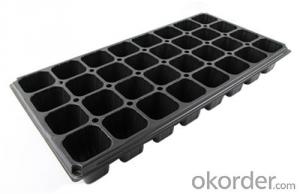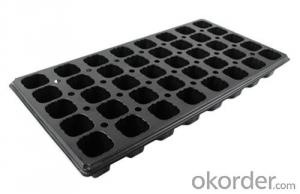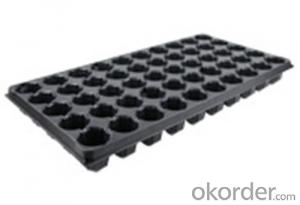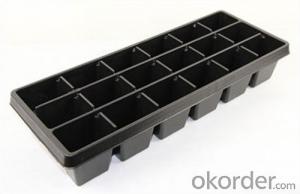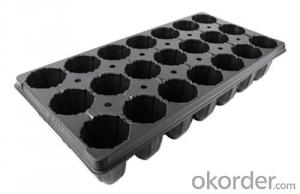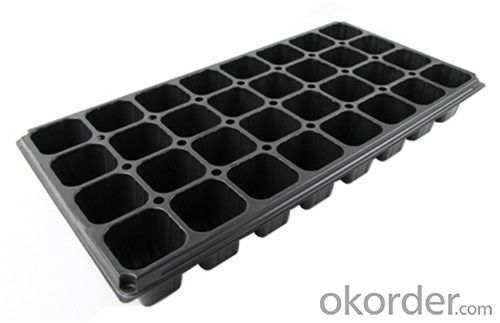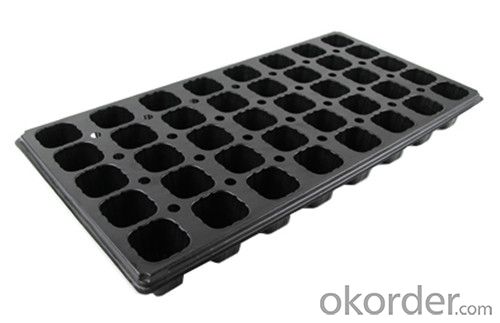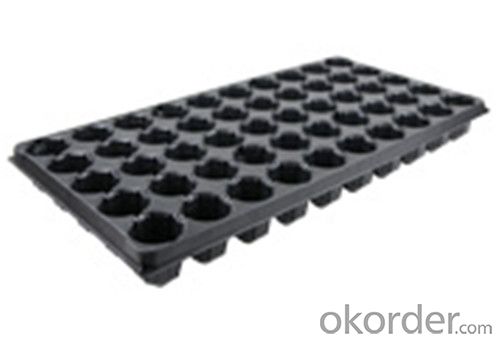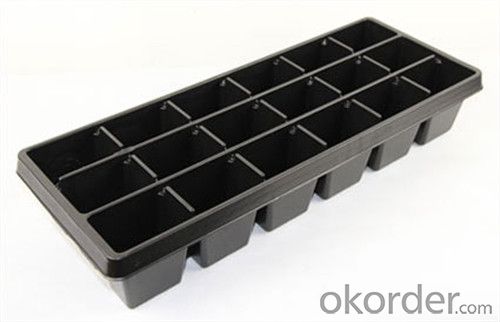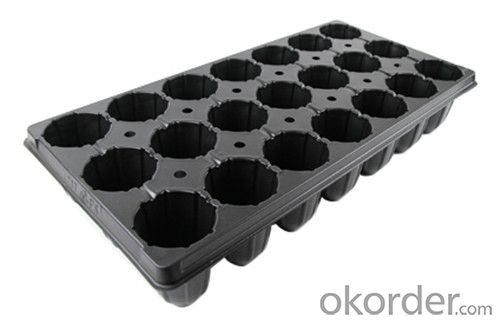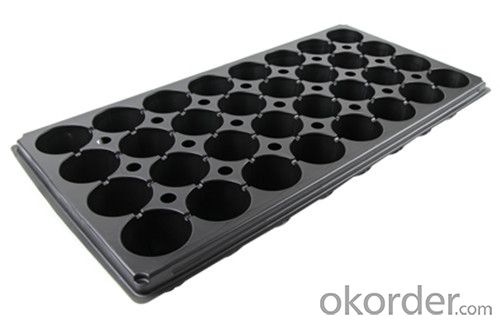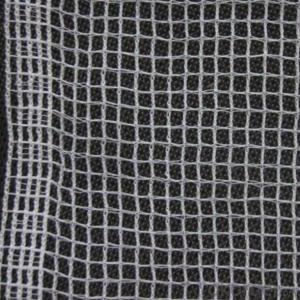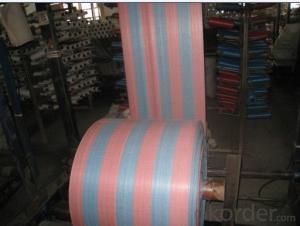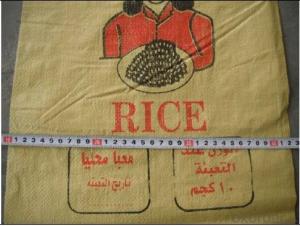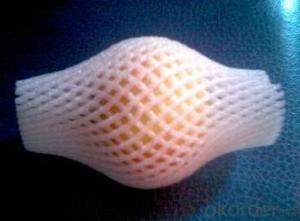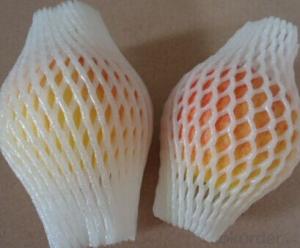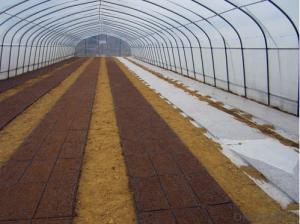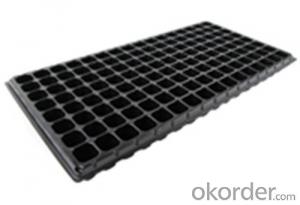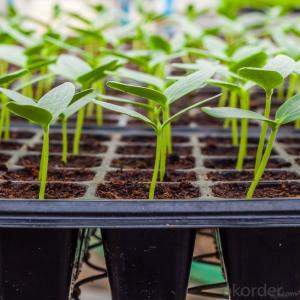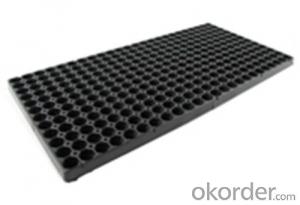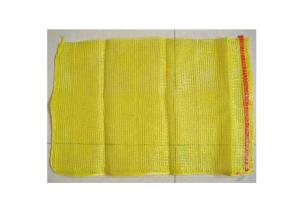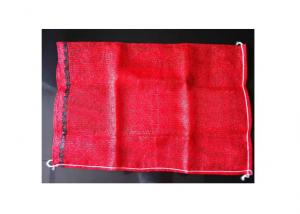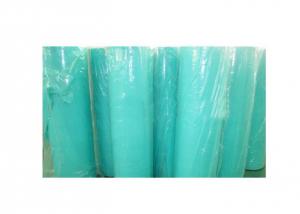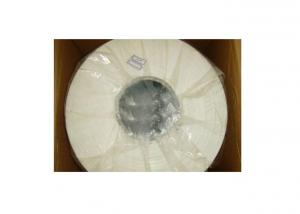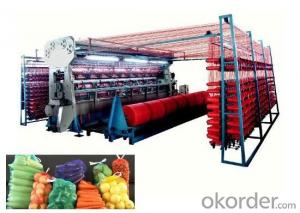Plastic Seed Tray Plug Tray for Green House Nursery Tray
- Loading Port:
- China main port
- Payment Terms:
- TT OR LC
- Min Order Qty:
- 1000 pc
- Supply Capability:
- 100000 pc/month
OKorder Service Pledge
OKorder Financial Service
You Might Also Like
Structure of the seed tray:
Top quality and competitive price.
Variety design and good appearance.
Easy to use, and remove.
Durable and reusable.
Eco-Friendly.
Description Main Features of the seed tray:
Ideal for Starting seeds and Transplanting Seedling.
Suitable for both manual and automatic planting.
Suitable for Propagating Vegetables, Flowers and other plant from seed in green-house or indoors.
Seed Tray Images:
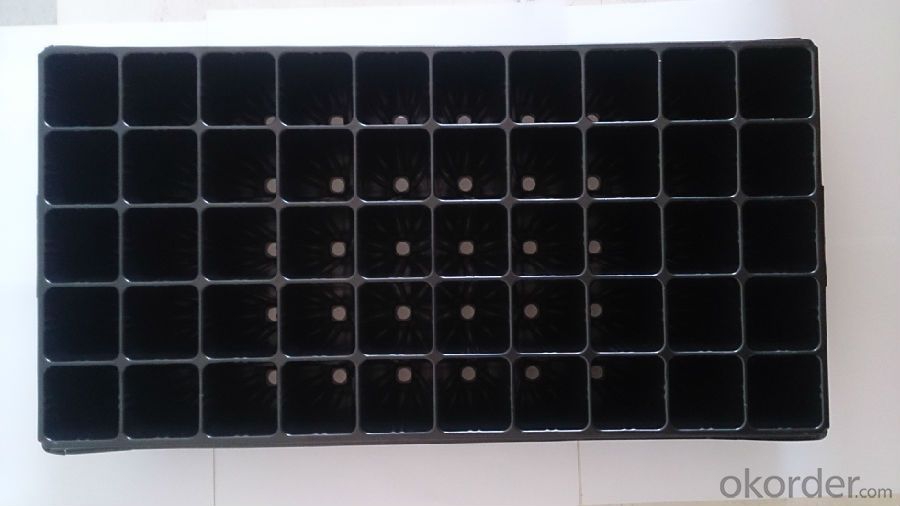
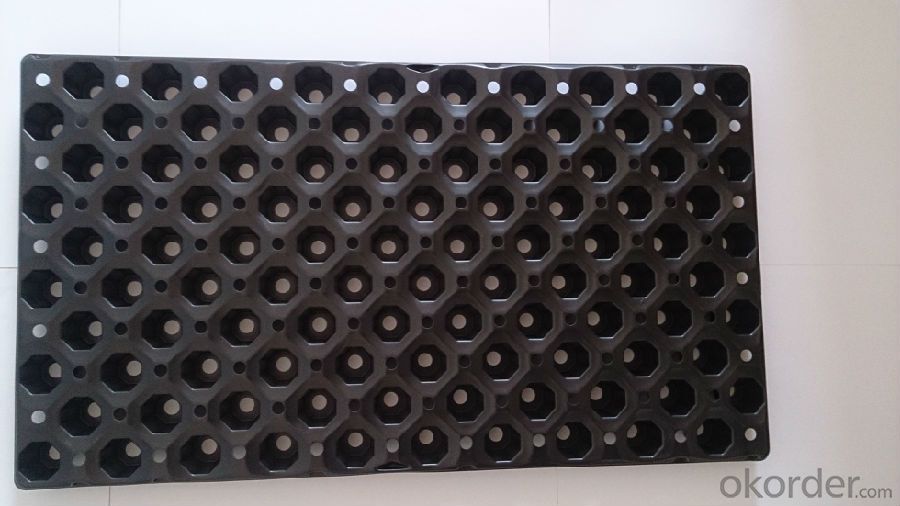
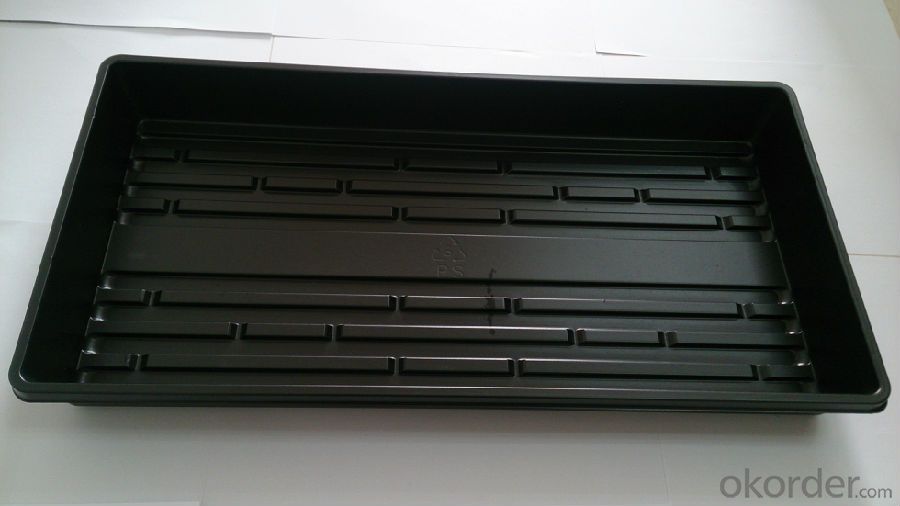
Seed Tray Specification:
Material: HIPS/PVC
Thickness: 0.5mm-1.5mm, Standard:1mm
Weight: 80g(±5)g-230g(±5)g, Standard weight:155g(±5)g
Size: length:490mm-540mm, width:190mm-345mm,depth:25mm-150mm
Standard:54mmX28mm
Cell count: 18-512
Package: carton
Using time: 8-10 times
FAQ:
Q:How Can I Get A Sample?
A:You can get samples by communicate with our export sales.
Q:How Long Is Delivery?
A:Delivery time will be 7-25 days according to order quantity.
Q:What Is The MOQ?
A:Our MOQ is 1*20FT container quantity, allow to mix several items.
Q:What Is Our Normal Payments Terms?
A:Our normal payment terms now is T/T, L/C or Western Union,Papal.
Q:How Do I Order Your Products?
A:You can check our website for any items you interest and you can also get communication with our export sales and order for it accordingly.
Q:What Kinds Of Material We Use In Our Product?
A:Our plastic flower pots use material such as PP polymer or PE polymer.
Thickness vs. Weight
Thickness of trays are from 0.5mm to 1.0mm.
1.0mm: 155g±5g; 100pcs/ctn.
0.9mm: 140g±5g; 120pcs/ctn.
0.7mm: 110g±5g; 150pcs/ctn.
0.6mm: 95g±5g; 180pcs/ctn.
0.5mm: 80g±5g; 200pcs/ctn.
Using time:
thickness of 0.5mm can be used 1 to 2 times.
thickness of 0.6mm can be used 3 to 4 times.
thickness of 0.7mm can be used 5 to 6 times.
thickness of 0.8mm can be used 7 to 8 times.
thickness of 0.9mm can be used 8 to 9 times.
thickness of 1.0mm can be used 8 to 10 times.
- Q: What are some ground cover options for dry, arid regions?
- Some ground cover options for dry, arid regions include succulents such as sedum and agave, as well as drought-tolerant grasses like buffalo grass and blue grama. Other options include low-growing shrubs like lavender and thyme, and native wildflowers such as desert marigold and penstemon.
- Q: What is the water drainage capacity of a nursery tray?
- The water drainage capacity of a nursery tray typically depends on its design and specifications. However, in general, nursery trays are designed with adequate drainage holes or slots to allow excess water to drain out efficiently. This helps prevent waterlogging and promotes healthy root growth in plants.
- Q: How do agricultural plastic products help with fruit and vegetable hygiene?
- Agricultural plastic products help with fruit and vegetable hygiene by providing a protective barrier that prevents contamination from external factors such as dirt, pests, and diseases. Plastic covers, mulch films, and packaging materials act as a shield, reducing the contact of produce with the ground, minimizing spoilage, and maintaining cleanliness. Additionally, plastic crates and bins facilitate safe transportation and storage, ensuring that fruits and vegetables remain fresh and free from potential contaminants throughout the supply chain.
- Q: Please spare a few minutes to share your opinion about this issue. Is paper bag is better than plastic bag when it comes shopping at the supermarket. What do you think? Please give your reason for why!Thanks in advance
- Plastic, I can re use a plastic bag. I've had the same 4 re-usable bags for over 2 years now and they are still going strong, like to see a paper one do that. I would prefer a natural fibre one, but have you seen what shops charge for those? My girlfriend tells me paper bags take a lot more energy to produce too
- Q: How do you choose ground cover that tolerates hot, dry climates?
- When choosing ground cover for hot, dry climates, it is important to select plants that are drought-tolerant and can withstand high temperatures. Look for ground cover options that have adaptations such as deep root systems, succulent leaves, or silver or gray foliage, as these traits often indicate heat and drought resistance. Additionally, consider native species or plants that are well-suited to arid environments, as they are more likely to thrive in these conditions. Lastly, ensure that the ground cover is suitable for the specific soil type and sun exposure of the area, as these factors also play a crucial role in its ability to tolerate hot, dry climates.
- Q: What are the different types of plastic pots used in plant nurseries?
- There are several different types of plastic pots commonly used in plant nurseries. These include standard nursery pots, which are lightweight and durable; fabric pots, which allow for better aeration and root development; biodegradable pots, which are made from materials that break down over time; and decorative pots, which are designed to enhance the visual appeal of the plants.
- Q: Can ground cover plants be used to create a natural-looking border or edge?
- Yes, ground cover plants can be used to create a natural-looking border or edge. Ground cover plants are low-growing plants that spread and fill in empty spaces, providing a lush and dense carpet-like effect. Their ability to cover large areas and their adaptability make them ideal for creating borders or edges that blend seamlessly with the surrounding landscape. Additionally, ground cover plants offer various colors, textures, and foliage, allowing for customization and enhancing the overall aesthetics of the border or edge.
- Q: Can ground cover plants be used to replace traditional mulch?
- Yes, ground cover plants can be used as an alternative to traditional mulch. They provide similar benefits, such as preventing weed growth, retaining soil moisture, and improving soil health. Additionally, ground cover plants can add aesthetic appeal to the landscape and create a natural habitat for beneficial insects and wildlife. However, it is important to consider factors like maintenance requirements, desired appearance, and specific plant species suitability for the area before replacing traditional mulch entirely with ground cover plants.
- Q: How do agricultural plastic products help with hydroponic deep water culture?
- Agricultural plastic products play a crucial role in hydroponic deep water culture by providing a range of benefits. Firstly, plastic materials such as PVC pipes and tubing are used to build the necessary infrastructure for the system, including the hydroponic channels and reservoirs. These plastic components are durable, lightweight, and resistant to water, making them ideal for creating a reliable and long-lasting hydroponic setup. Additionally, agricultural plastic products are used to create specialized containers or pots that hold the plants' roots in the nutrient-rich water solution. These containers are designed to optimize the oxygen and nutrient supply to the plants, promoting healthy growth and maximizing crop productivity. The plastic containers are typically lightweight and easy to clean, allowing for efficient management of the hydroponic system. Furthermore, plastic films or sheets are often used as covers for the hydroponic channels or reservoirs to prevent evaporation and maintain optimal temperature and humidity levels. These plastic covers help to conserve water, reduce the risk of contamination, and create a controlled environment that enhances plant growth. Overall, agricultural plastic products are essential in hydroponic deep water culture as they provide the necessary infrastructure, containers, and covers that contribute to the efficiency, productivity, and sustainability of the system.
- Q: Are nursery trays suitable for starting shrub transplants?
- Yes, nursery trays are suitable for starting shrub transplants. Nursery trays provide a controlled and protected environment for the young shrub transplants, promoting their growth and development. They also allow for easy handling, organization, and transportation of the transplants.
Send your message to us
Plastic Seed Tray Plug Tray for Green House Nursery Tray
- Loading Port:
- China main port
- Payment Terms:
- TT OR LC
- Min Order Qty:
- 1000 pc
- Supply Capability:
- 100000 pc/month
OKorder Service Pledge
OKorder Financial Service
Similar products
Hot products
Hot Searches
Related keywords
